Discoloration of Teeth
There are two factors causing tooth discoloration—internal factor and external factor
External factors causing tooth discoloration
• Brown and black stains on the surface of teeth
 Teeth with black stains
Teeth with black stains
|
• Cause
Habitual smoking or drinking of dark-coloured beverages, such as tea or coffee,
result in the food colours being adsorbed onto the tooth surfaces.
• Treatment
The dentist will use:
• Dental pumice to remove the stain, and then prophylaxis paste
to smoothen the tooth surfaces;
• Prophyjet—utilizing air to spray a mixture of fine baking soda
powder and water onto the surfaces of teeth to remove stains.
|
Prophyjet cleansing
|
 Teeth after black stain removal
Teeth after black stain removal
|
• Prevention
Do not smoke and avoid drinking dark-coloured beverages to minimize food colours
being adsorbed.
• Green and orange stains at the surface of teeth
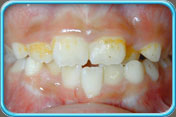 Teeth with orange stain
Teeth with orange stain
|
• Cause
Teeth has not been cleaned thoroughly, and the accumulated dental plaque has adsorbed
food colours and has formed green and orange stains.
• Treatment
Dentist will perform scaling to remove accumulated dental plaque and stains.
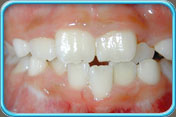 Teeth after orange stain removal
Teeth after orange stain removal
|
• Prevention
Brush every morning and before bed at night, and use dental floss to remove dental
plaque to keep the teeth white.
Internal factors causing tooth discoloration
• Teeth appear to be greyish-blue to brownish-yellow
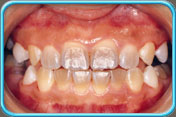
• Cause
If tetracycline, a kind of antibiotics, is taken during the development of teeth,
the dentine forming cells will absorb the tetracycline. The dentine thus formed
will be yellowish-brown to bluish-grey which will show through as the colour of
the teeth.
• Treatment
• Bleaching
• Laminate Veneer
• Teeth appear to be greyish-black
• Cause1
Dental Caries
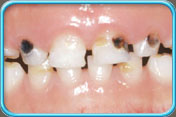
• Treatment
The dentist removes the tooth decay, and then puts on a filling.
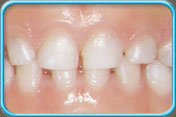
• Cause2
Pulp necrosis
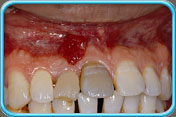
The pulp becomes necrotic because of tooth trauma or dental caries, and the tooth
will appear greyish-black.
• Treatment
Root canal therapy (Endodontic treatment) must be
done to treat the discoloured tooth which has pulp necrosis.
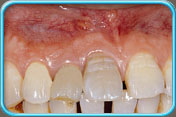
If teeth still appear greyish-black, dentist can treat the discolored teeth by bleaching, laminate veneer
or crown.
• Yellowish-brown or white patches at the surface of a tooth
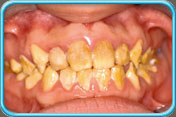
• Cause
• Early dental caries
• Disturbance during the development of a tooth
If a deciduous tooth is so decayed that the pulp is exposed, the bacteria, via the
apex of the tooth, will cause an infection in the vicinity of the developing permanent
successor. This will disturb the development of the enamel
of the permanent tooth, resulting in the formation of yellowish-brown patches.
FAIL (the browser should render some flash content, not this).
• Fluorosis
Long term excessive fluoride ingestion will alter the development of the enamel
of the teeth. This disturbance will show as white patches on the teeth.
• Treatment
• Early dental caries
Dentist can apply topical fluoride onto the surfaces
of teeth so that the early caries lesion can be remineralised.
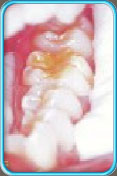
• Disturbance during the development of a tooth or Fluorosis
Filling, Laminate veneer
or Crown.
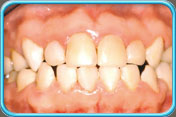 Tooth after filling
Tooth after filling
|